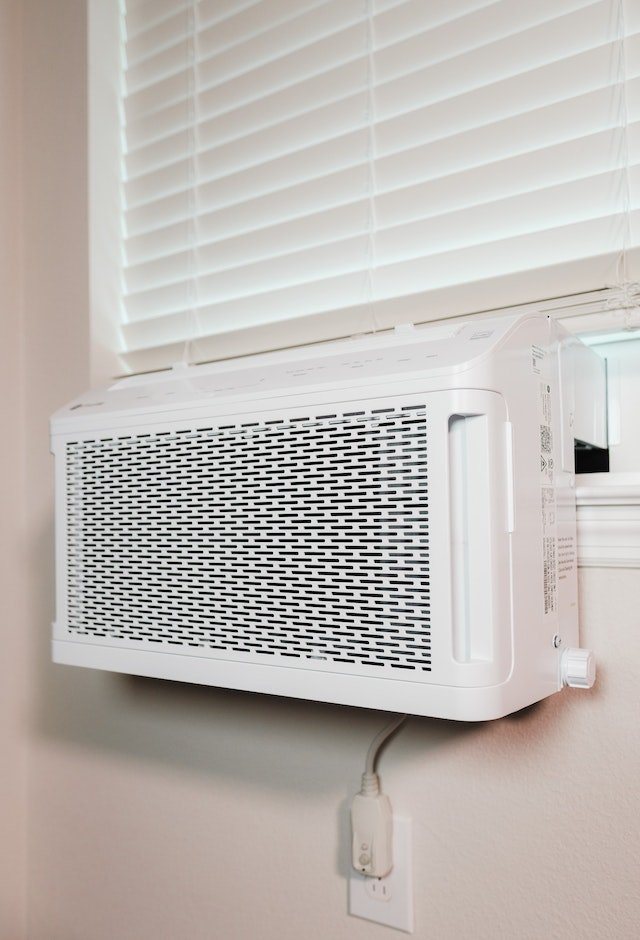Last Updated on November 6, 2023 by Asfa Rasheed
Traditional central air conditioning systems with ductwork have long been the go-to choice when it comes to cooling our homes. However, in recent years, ductless air conditioning systems have gained popularity due to their efficiency and flexibility.
In this guide, we will explore what ductless air conditioning is, its benefits, and help you determine if it’s the right choice for you.
Table of Contents
What is Ductless Air Conditioning?
Ductless air conditioning, also known as mini-split systems, is a type of cooling system that doesn’t need ductwork to distribute air throughout a building. Instead, it consists of an outdoor unit and one or more indoor units, which are installed in the rooms or areas you want to cool. These units are connected by refrigerant lines, allowing for efficient cooling without the need for ducts.
History and Background of Ductless Air Conditioning
It wasn’t until the 1970s that the first residential ductless air conditioning systems were introduced. This innovation allowed homeowners to enjoy the benefits of air conditioning without the need for costly and invasive duct installations.
The early ductless systems consisted of a single outdoor unit connected to an indoor unit, which could be mounted on the wall or ceiling of a room. These systems gained popularity in countries like Japan, where residential spaces were often small, and ductwork was impractical.
Over the years, advancements in technology and design have made ductless air conditioning systems more efficient and versatile. Today, they are widely used in residential and commercial settings, providing a practical and energy-efficient alternative to traditional central air conditioning systems.
Benefits
There are many benefits associated with ductless air conditioning, so long as you use the services of a professional and reputable AC company in Sarasota to ensure it’s set up correctly. These benefits include the following:
Energy efficiency
As there are no ducts, there is no energy loss through leaks or inefficient distribution.
Plus, each indoor unit operates independently, allowing for precise temperature control and reducing energy waste.
Flexible installation
Ductless systems are ideal for both new construction and retrofitting older homes. The absence of ductwork means there’s no need for extensive renovations or modifications to accommodate the system.
The indoor units can be easily mounted on walls or ceilings, giving you the freedom to cool specific zones or individual rooms according to your needs.
Improved indoor air quality
Ducts in central air conditioning systems can accumulate dust, allergens, and other pollutants over time. This concern is eliminated with ductless systems as the air is directly delivered from the indoor units.
Some models even feature built-in filters that help purify the air, promoting a healthier indoor environment.
Quiet operation
Ductless air conditioners operate quietly, as the noisy components, such as the compressor, are located outside the house.
This makes them an excellent choice for bedrooms, living rooms, or any space where peace and tranquility are desired.
Cost savings
While ductless systems may have a higher upfront cost compared to traditional systems, they can save you money in the long run. The energy efficiency and zone-specific cooling of ductless systems help reduce utility bills.
Additionally, in homes without existing ductwork, the cost of installing ducts can be significant, making ductless air conditioning a more affordable option.
Is Ductless Air Conditioning Right for You?
While ductless air conditioning has a number of clear benefits, it’s all about determining whether or not this is right for your home. There are four critical factors that can help you come to the right decision for your home:
- Space and usage – Ductless systems are best suited for smaller spaces, individual rooms, or areas where specific temperature control is desired. If you have a large home and require cooling for every room, a central air conditioning system with ducts may be a more appropriate choice.
- Existing ductwork – If you already have ductwork installed in your home, upgrading or maintaining your current central air conditioning system may be more cost-effective. However, if your ducts are old, inefficient, or in need of repairs, switching to a ductless system could be a viable alternative.
- Energy efficiency goals – If you prioritize energy efficiency and reducing your carbon footprint, ductless air conditioning is a compelling option. Its zone-specific cooling and lack of ductwork minimize energy waste and help lower your environmental impact.
- Budget – While ductless air conditioning systems can provide long-term savings, they do require a higher upfront investment. Consider your budget and weigh the initial cost against the energy savings and benefits over time.
Understanding the benefits of ductless air conditioning
Ductless air conditioning systems offer numerous benefits, including energy efficiency, flexible installation options, improved indoor air quality, quiet operation, and potential cost savings in the long run.
While ductless systems may not be suitable for every situation, they are an excellent choice for smaller spaces, individual rooms, and areas where precise temperature control is desired.
As technology continues to advance, such systems are likely to become even more efficient and popular, providing a practical and sustainable cooling solution for homes and businesses alike.
Apart from that if you are interested to know about Common Air Conditioning Problems then visit our Home Improvement category.



























